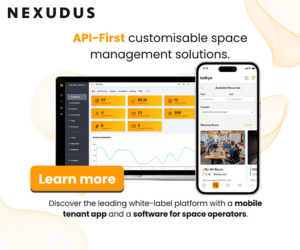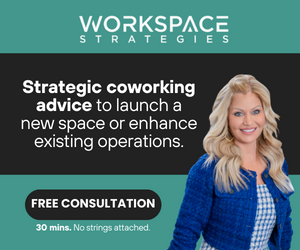- The market and intelligence advisory firm predicts businesses will cut an average of one quarter of their office space as a result of hybrid working.
- The shift to hybrid working means offices need to adapt to meet the changing needs of employees, and many will shift to more activity-based work models, CSS Insight claims.
- Employees will seek employment that offers more flexibility, privacy, and better work-life balance; most worker monitoring technology will hurt retention and worker morale.
During the CCS Insight’s Predictions for 2022 and beyond event, which recently took place on the 12-14th of October, various key trends which have been highly anticipated or followed within the tech industry this year were explored; from sustainability and the future of work, to 5G and network infrastructure, and consumer tech like AR/VR, alongside smartphones and wearables.
Analysts from CCS Insight elaborated on what the future has in store for these trends and how they will continue to shape our lives and that of the businesses around us.
Here are some of CCS Insight’s predictions:
By 2025, businesses cut an average of one quarter of their office space as a result of hybrid working.
- The pandemic has shown organizations that home working can be an effective option for employees, and CCS has previously predicted that it will remain a permanent fixture in most businesses after the pandemic subsides. Even before COVID-19, the average percentage of desks in use at any one time was only 50% to 60%. With more people working remotely more often, businesses see an opportunity to save costs by reducing their office space, particularly in expensive city center locations.
Angela Ashenden, Principal Analyst of workplace transformation for CCS Insight, told Allwork.Space that as we go forward into the future, there’s going to be a shift to hybrid working.
“We’ve benefited from technology to support remote working in a way that most people did not think was possible. We’ve proved during the pandemic that businesses can keep operating. And as a result, we still need that in person interaction so we still need the office,” Ashendan told Allwork.Space.
Activity-based working becomes the standard office protocol by 2024.
- The shift to hybrid working means offices need to adapt to meet the changing needs of employees. Activity-based working is a concept that has been around for 15 years; it is based on businesses giving employees a range of different types of workspaces in the office environment to support different types of working, for example, formal and informal meetings, interactive, collaborative work — or focused, independent work. Employees choose a space to work based on what they need to do, moving between spaces throughout the day if appropriate. This also means that large, status-based boardrooms give way to more, smaller meeting spaces, and C-suite executive embedded with lower-level workers.
The hybrid worker becomes the default user type for IT provision and management processes by 2022.
- Prior to the pandemic, most IT teams considered office-based employees to be their default IT user, and IT provision, security, management and support processes revolved around this as the norm. With the increase in remote work and large swathes of the workforce shifting to hybrid working, the office-based employee is no longer common enough to be the default profile. The shift has huge implications for organizations’ IT strategies, driving a wave of investment and process optimization in several sectors.
The shift to a digital office, where processes are in the cloud by default, is cemented by the pandemic and hybrid working.
- The benefits of cloud-based productivity and collaboration tools, allowing employees to access content, applications and processes from any location and any device, have boosted adoption over the past few years. However, the increase in hybrid working brings them into the mainstream, with businesses starting to take a more measured, strategic approach to enabling a digital office as the norm.
Exhaustion with online meetings, combined with increasingly misaligned working hours, fuels demand for asynchronous collaboration tools in 2022.
- In the rush to find a better solution than email for collaboration, businesses have swung too eagerly toward real-time, synchronous collaboration tools like chat and video meetings, which assume that everyone is available and focused on the same thing at the same time. As organizations adopt more-flexible working approaches, employees need to be able to work collaboratively but asynchronously. A raft of asynchronous collaboration features will integrate in the leading collaboration tools, like Slack’s video memo capabilities.
In 2022, employees seek to redraw the lines between their work and home lives.
- Although it brings many advantages for employees, the shift to more-flexible ways of working has the unwelcome side effect that employees often struggle to switch off, with the lines between home and work becoming increasingly blurred. This creates frustration and pushback from employees, and employers are forced to implement policies to address this as part of efforts to protect the mental well-being of their staff.
Concerns about staff retention following the pandemic drive a surge of investment in tools to improve the employee experience in 2022.
- Now it is clear that employees can be trusted to work effectively and be productive wherever they work, people start to assess what matters to them in a job. They are ready to change employers to ensure they work for a company that values them and is willing to invest in their development and career. Businesses respond by rushing to invest in employee-centric initiatives and technologies that promote employee enablement, supporting continuous learning and development to help individuals take more control over their career progression without leaving the company.
In 2022, a focus on employee productivity monitoring prompts a backlash from employees, culminating in successful litigation.
- With businesses lacking visibility of employees’ activities and well-being when they are working remotely, there is a growing appetite for monitoring technologies that use data from applications and devices to determine the way employees are working and behaving. However, this has explosive consequences, with employees concerned that monitoring fails to respect their privacy or is being used inappropriately by their managers. It leads to a court action, for example for constructive dismissal.
Ashenden says that when implementing this type of bossware, you need to factor in the impact on employee trust to make sure that everyone understands what’s going on.
“I think the problem is that employees’ perceptions of that (bossware) doesn’t necessarily align with executives or IT managers, so you kind of have this disconnect or mismatch of expectations and understanding. It will backfire at some point. Some organizations’ tools are more invasive, shall we say, than others – in terms of what they’re tracking and for what purpose. I think there is definitely a danger there,” Ashenden said.

 Dr. Gleb Tsipursky – The Office Whisperer
Dr. Gleb Tsipursky – The Office Whisperer Cat Johnson – Coworking Marketing Maven
Cat Johnson – Coworking Marketing Maven Angela Howard – Culture Expert
Angela Howard – Culture Expert Drew Jones – Design & Innovation
Drew Jones – Design & Innovation Andrea Pirrotti-Dranchak – Competitive Advantage
Andrea Pirrotti-Dranchak – Competitive Advantage Jonathan Price – CRE & Flex Expert
Jonathan Price – CRE & Flex Expert Jeremy Fennema – Tech Innovation Alchemist
Jeremy Fennema – Tech Innovation Alchemist







